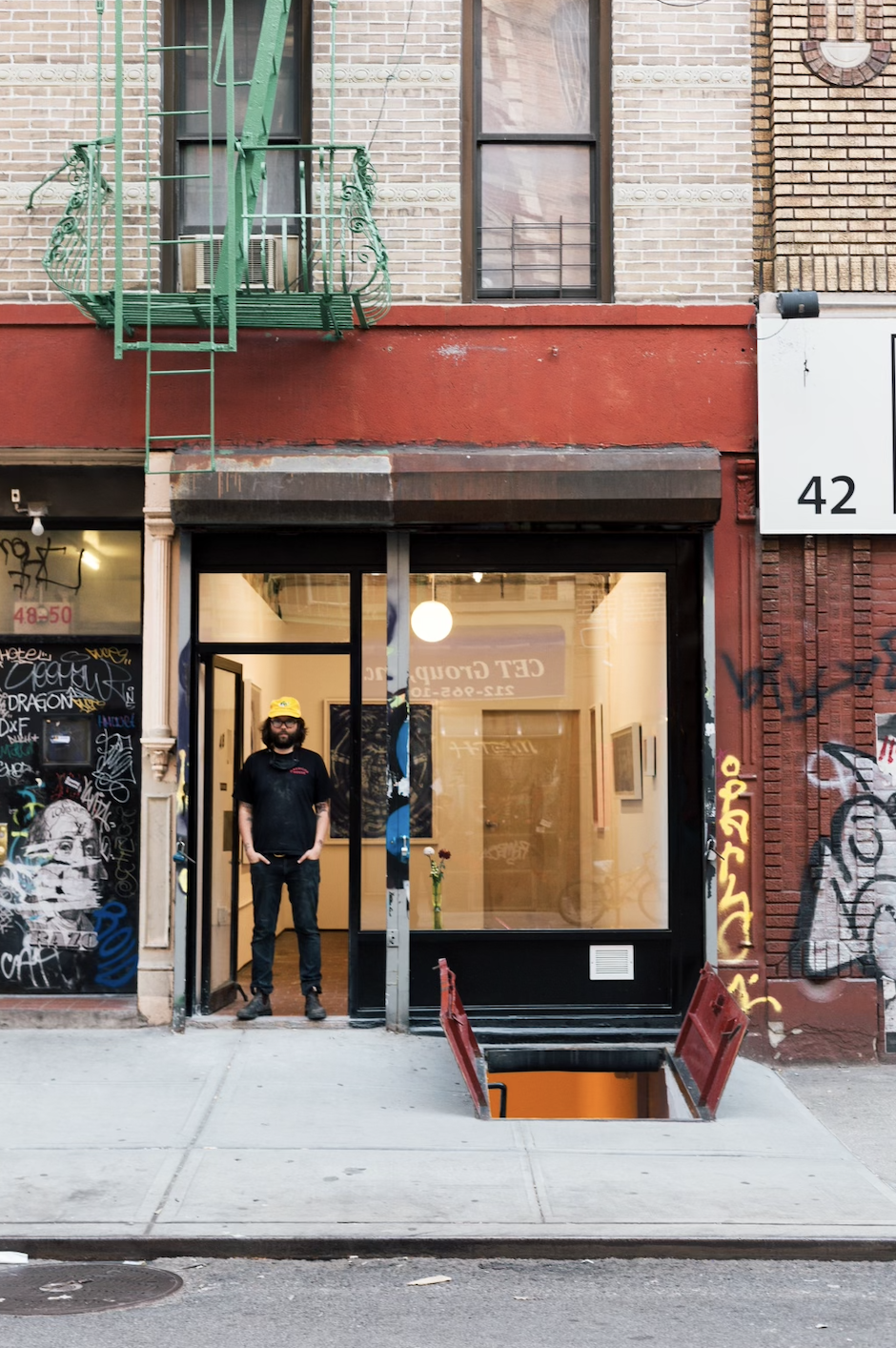
“I have a theory about this parking spot,” Louis Shannon, the owner of New York’s Entrance gallery, said to me the other day on Ludlow Street on Manhattan’s Lower East Side, just steps from his gallery.
This stretch of street, between Canal and Broome, Shannon said, is one of those New York oddballs where you don’t have to move your car for street cleaning. “So pretty much you’ve got the best parking spot in all of Dimes Square.
“And this is the best neighborhood in New York City,” he continued, eyes getting brighter. “And New York City is the best city in the country, and—before Trump—people used to say this was the best country in the world. So, in a sense, we’re looking at the best parking spot in the entire world.”
This kind of joie de vivre is perhaps Shannon’s defining characteristic. In fact, joie de vivre is in his blood: The painter of one of the world’s crowning treasures, Le bonheur de vivre (1905–06), Henri Matisse, just so happens to be Shannon’s great great-grandfather. Heard of him?
The entrance to Entrance.
“You choose how you want to interact with it, so I’m choosing a very positive association with it,” he said of his lineage, which also includes Marcel Duchamp (through marriage) and artist parents: sculptor Tom Shannon and Catherine Matisse Monnier. “I’m really grateful that having a family of artists means that I’ve had incredible access to seeing art.”
It also means he has access to about 100 years’ worth of insider information about the art world and how it’s evolved.
“I know untold stories about incredible pieces, and the genuine secrets behind them,” he said, though those don’t really interest him so much. Instead, Shannon is using Entrance to focus on emerging artists, and over this past summer, he buckled down from his bon vivant bohemian past (he has dipped his toes into the music scene and automobile repair) to seek himself out as a serious art dealer.
Hannah Lee, Appa (2021). Courtesy Entrance Gallery.
How to Make an Artist’s Career
When the artist Hannah Lee first met Shannon, she was on unemployment after losing her service-industry job due to the pandemic. For the past 10 years, the painter had been toiling away at devastatingly intimate scenes of her family in between shifts at the Smile in SoHo.
Shannon met Lee through a friend, and the two soon began planning her debut solo show. “That’s kind of how Louis does it—you just hang out, as friends, and things happen from there,” she said. “With him, it always feels like doing business with a friend.”
Lee’s show, “First Language,” opened in December, and has since sold out. Andrea K. Scott of the New Yorker described it as “spellbinding”, writing that Lee is an “exceedingly talented figurative painter.” Shannon described Scott’s visit to the gallery as a bit of a shakedown. “She came in and was like, ‘Why don’t I know about this space! Who are you!'”
Shannon, in a sense, is quiet about the work he does. “I’m incredibly cautious about hype,” he said. “I know that it exists, but I’m incredibly averse to it because I grew up with artist parents.” The works in Lee’s show were all priced at $6,000 or below, and though she has a significant wait list, Shannon is cautious about changing those prices.
“I’ve seen both sides of the coin, with people who have ended up hyper-successful after long, steady, considered trajectories, and those who have had one big moment then petered out,” he said. “I have to say the former is the most attractive.”
Hannah Lee, Milk, 2020. Courtesy Entrance Gallery.
Another legacy name in Shannon’s family is Pierre Matisse, the French gallerist who first showed artists such as Yves Tanguy and Joan Miró. Shannon has taken a few leaves from his book.
“People’s careers start a lot sooner than they used to,” Shannon said. “So you have to start yourself on that path really young. Raising prices quickly helps no one. If you really look at the economics of it, to benefit the artist, prices get raised on the secondary market. And you want to be very careful on the primary to avoid inflation, an inflated ego, an inflated sushi habit, whatever. You hope that you can raise a career out of your market, raise a family, maybe have employees one day.”
For now, Shannon is putting a portion of sales proceeds directly back into Entrance. He has had the space since 2011, back when it was home to the guerrilla art collective “Luck You,” of which Shannon was a member alongside his brother, Jack. Louis took over the lease in 2017, and since has hosted artist residencies, a tattoo pop-up cum gallery show with Carson Foley, and dinners in conjunction with chef friends in the area, namely Mission Chinese’s Danny Bowien, Dr. Clark’s Yudai Kanayama, and artist Nick Sethi.
Shannon sees the art world as a binary. “There’s the artist and the nurse, and I’d rather be the nurse.” In fact, he sees more creativity on the “nurse” side of things.
“Within that, there’s all the other roles you take on: dealer, curator, or producer are all functions within a larger industry. But they’re mutable. You don’t have to be just one thing. The overarching thing is just that I want to help people.”